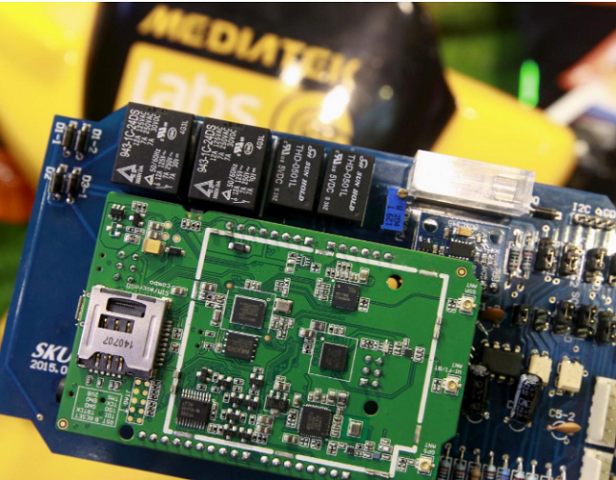MediaTek aims to take on Qualcomm with new 5G chip
The company is best known for making chips that go into smart speaker devices such as Amazon’s Echo units

MediaTek chips are seen on a development board at the MediaTek booth during the 2015 Computex exhibition in Taipei, Taiwan, June 3, 2015.
PHOTO: REUTERS
MediaTek is best known for making chips that go into smart speaker devices such as Amazon’s Echo units and for making the chips inside the more basic Android phones. Qualcomm’s older chips also find their way into some of those low-priced phones, but the San Diego company is better known for supplying high-powered chips to more expensive Android phones such as Google’s Pixel.
Apple may not be able to release its 5G modem until 2025
With a new chip unveiled at the Computex trade show in Taiwan, MediaTek is targeting the more powerful phones currently supplied by Qualcomm. The chip will contain MediaTek’s 5G modem, which connects phones to the next generation of wireless data networks rolling out this year and next.
MediaTek’s new chip combines that modem with the latest processor core technology from Softbank -owned Arm Holdings. By building in high-powered processors, as well as computing cores for things like artificial intelligence, MediaTek is seeking to challenge Qualcomm’s market dominance.
However, Qualcomm has a head start. In February, it announced its second-generation 5G chip for smartphones.
Huawei and Samsung are also developing 5G chips, supplying their own phones. Intel, which had been supplying modems for Apple’s iPhone, said it would exit the 5G modem business after Apple inked a chip supply deal with Qualcomm in April.
Apple, Qualcomm reach agreement in royalty dispute
Qualcomm’s chip also handles the two variants of 5G networks, so-called sub-6 and millimetre wave bands. That means that phones using its chip will work on any carrier’s 5G networks.
MediaTek’s chip, by contrast, currently handles only sub-6 variants of 5G networks. That helps keep its costs down, MediaTek officials said. But it also means it will not work on all 5G networks from carriers such as Verizon and AT&T that use millimetre wave technology.
Russ Mestechkin, MediaTek’s senior director of sales and business development for the US and Latin America, told Reuters the company was confident its chip could compete in the market for phones designed to work on networks that only use sub-6 technology, such as those from Sprint and T-Mobile US in the United States and many Chinese networks.



















COMMENTS
Comments are moderated and generally will be posted if they are on-topic and not abusive.
For more information, please see our Comments FAQ